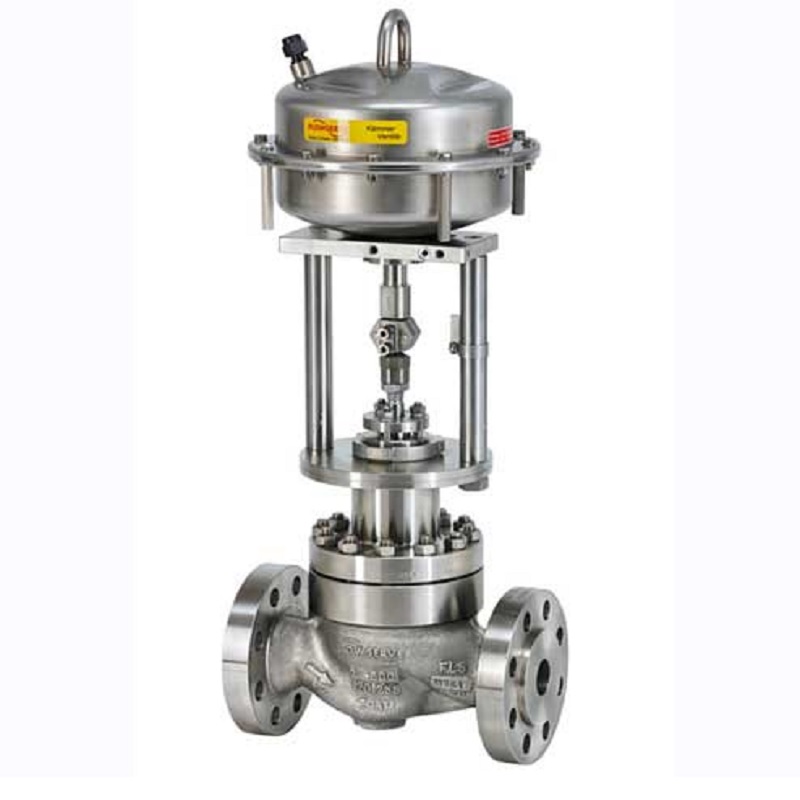Recognizing the Value of Control Valves in Process Automation
Recognizing the Value of Control Valves in Process Automation
Blog Article

Maximize Energy Cost Savings and Convenience With Advanced Structure Automation Controls
In the realm of contemporary architecture and facility administration, the integration of innovative structure automation manages stands as a crucial improvement. By utilizing the power of automation, structures can adjust, react, and advance in means that were as soon as inconceivable.
Energy Effectiveness Advantages
Power efficiency benefits can substantially reduce power usage and functional costs in buildings. Energy-efficient systems, such as innovative structure automation controls, can maximize the usage of resources like heating, air conditioning, and illumination, leading to lower power costs over time.
Furthermore, enhanced energy efficiency can extend the lifespan of building devices and systems. By operating extra efficiently, heating and cooling systems, lighting fixture, and other structure components experience less deterioration, causing lowered upkeep and replacement expenses. In addition, energy-efficient buildings typically command higher home worths and rental rates, supplying long-term economic advantages to owners.
In addition, power efficiency can enhance occupant convenience and efficiency. Effectively regulated indoor settings with optimum lights and thermal problems develop an even more enjoyable and helpful office, bring about enhanced worker satisfaction and performance. On the whole, the energy efficiency benefits connected with advanced building automation controls are complex, encompassing cost savings, ecological stewardship, and occupant well-being.
Boosted Convenience Control
Enhancing convenience control in building environments needs a sophisticated integration of innovative automation systems for ideal passenger wellness. By using sophisticated structure automation controls, facilities can tailor the indoor environment to meet the particular requirements and preferences of passengers. These systems make it possible for precise policy of temperature, air flow, and illumination, creating a comfortable and productive atmosphere. Owner contentment and productivity are carefully connected to thermal convenience, making it necessary to have systems in position that can adapt to changing problems in real-time.
By incorporating these advanced controls, structures can not just boost comfort however also enhance power efficiency by enhancing system procedures based on real tenancy and usage patterns. Ultimately, focusing on owner convenience via innovative automation systems leads to a more delightful and healthier indoor atmosphere.
Functional Efficiency Improvements

In addition, the implementation of real-time tracking and analytics devices enables structure drivers to determine power inefficiencies and functional abnormalities without delay. By continually monitoring power usage patterns and system performance metrics, modifications can be made in real-time to enhance power usage and guarantee peak operational effectiveness. control valves. Furthermore, incorporating demand feedback strategies into structure automation controls can better improve functional efficiency by dynamically readjusting power usage based on grid problems and rates signals
Indoor Environment Optimization
Efficient indoor environment optimization is an essential facet of building automation controls, guaranteeing passengers' convenience and wellness while making best use of power financial savings. By try this website utilizing sophisticated sensors and controls, developing automation systems can continuously monitor and adjust temperature, humidity degrees, air high quality, and ventilation to create an ideal indoor setting. Keeping regular and comfortable conditions not only enhances owner fulfillment yet additionally increases productivity and overall well-being.
Indoor climate optimization likewise plays a crucial role in power efficiency. By fine-tuning cooling, heating, and air flow systems based upon real-time information and occupancy patterns, building automation controls can significantly decrease energy intake - control valves. For instance, carrying out approaches such as demand-controlled air flow and thermal zoning can help reduce power waste while making certain that each location of the structure receives the needed conditioning.

Lasting Atmosphere Creation
Structure automation controls not only maximize indoor climate conditions for energy performance and resident convenience yet likewise lay the foundation for creating a sustainable environment with tactical management of sources and systems. By incorporating sophisticated structure automation innovations, such as sensors, actuators, and intelligent software, facilities can readjust and check power usage in real-time to lessen waste and minimize their index carbon impact. These systems make it possible for predictive maintenance, identifying potential problems before they escalate and optimizing tools performance to enhance long life and performance.
Furthermore, lasting environment creation extends beyond energy administration to encompass water conservation, waste decrease, and interior air top quality improvement. Building automation controls can regulate water use, identify leaks, and make sure proper waste disposal techniques, adding to overall sustainability initiatives. Additionally, by controlling and checking air flow and filtering systems, these innovations enhance passenger wellness and efficiency while reducing energy consumption linked with cooling and heating procedures.
Verdict
In final thought, advanced structure automation regulates deal considerable advantages in terms of energy savings, comfort control, operational efficiency, interior environment optimization, and producing a lasting setting. By implementing these controls, buildings can achieve optimum efficiency while reducing energy intake and boosting owner comfort. It is evident that making use of advanced automation technology is vital in enhancing building efficiency and producing a much more lasting future.
Power performance advantages can significantly minimize energy consumption and operational prices in structures. In general, the energy performance benefits linked with innovative building automation controls are multifaceted, incorporating price savings, environmental stewardship, and resident wellness.
Furthermore, integrating need action techniques into structure automation controls can additionally boost operational effectiveness by dynamically adjusting power use based on grid problems and pricing signals.
Structure automation controls not only enhance indoor environment conditions for power efficiency and resident comfort but additionally lay the structure for developing a lasting setting with calculated management of systems and resources.In verdict, advanced Click This Link building automation manages deal substantial advantages in terms of power cost savings, comfort control, functional efficiency, interior climate optimization, and creating a sustainable environment.
Report this page